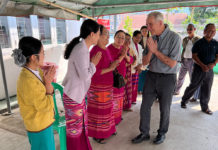District elections in Windsor
In 2018, Santa Rosa was forced into district elections. Windsor is now facing the same challenge for the 2020 election. The reason for this change is to better represent disenfranchised populations (specifically the Windsor Latino population).
The town has already decided on four new districts and an elected mayor every two years. This will give Windsor voters three votes every four years, down from the current five votes every four years, but it will allow still being able to vote in every election, every two years.
It is proposed that district C (East-Central Windsor 33 percent Latino) and the mayor be voted on in the 2020 election. (See town’s website for map). I question why the most underrepresented district (district A, NW Windsor with the smallest population and the largest Latino population of 46 percent) is not being included in the 2020 vote, but an at-large position is being included.
Shouldn’t we be allowing the most underrepresented area the first chance at the next election? I think the simple, most effective solution would be voting in District C and District A in 2020; and then District B and D, along with the newly at-large two-year mayor in 2022. Putting an at-large position before an underrepresented district does not meet the spirit of the CVRA law (the actual reason we are having to create districts in the first place). Will Windsor even be in compliance with this law if we put an at-large vote before the most underrepresented district votes?
If you have opinions, want to participate in making the best choices for the town of Windsor; please let the Windsor Town Council know your thoughts. Call, email, text or write to the Windsor Town Council before the next meeting on March 20. Also, please attend the District Election Hearing on March 20 at 6 p.m. in Windsor Town Hall. Districting will change the way you vote and your representation in Windsor.
Betsy Mallace
Windsor
67.4
F
Healdsburg
April 18, 2025








